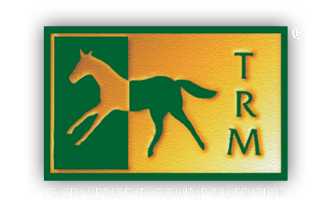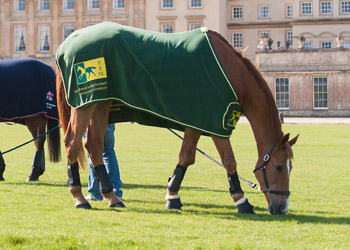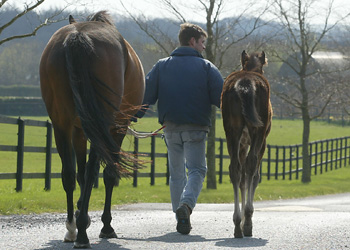There is little or no readily available information on the relative efficiency of topical cooling agents. However there are many products on the market claiming to cool the equine limb. Each claims various benefits, including cooling, but there appears to be little or no scientific data to support these claims.
This study was set up to ascertain which of the products was most effective at cooling the equine leg under normal yard conditions, when used following the manufacturers recommendations. It also aims to produce a baseline from which adjustments to instructions could be made and the results of these adjustments tested in future research.
Most of the recommendations and instructions accompanying the products are not supported by research or evidence and appear to be anecdotal. Therefore with many products the recommended usage times and or dosages may not be the most efficient. For example, the pre-set temperature of the Zamar may not be the most useful. The figure was set using veterinary advice but with no backup research into its effects. Important information required by owners and physiotherapists re the use of these products may be disparate and misleading.
Most research into the use of cold has been done in the human field in applications over muscle tissue. In the horse cold therapy is usually used in the lower limb over tendon and bone and over considerably hairier skin! The results of human research are therefore probably not fully transferable to the equine field. This may result in over or under treatment.
It should be remembered that this trial only tested temperature. Many of these products also claim to have a ‘healing’ and/ or anti inflammatory effect and no attempts were made to measure these effects.
TRIAL METHOD
Subjects
To match breed, type and occupation three thoroughbreds horses in full race training were selected for use. These consisted of one mare and two geldings aged between 8 and 10 years (average age 8.6 years). All were in a regular training regime for jump racing, were fully fit, and had no current injuries. All had no previous injuries to the lower limb below the carpus.
Protocol
Leg temperature measurements were taken using a hand held digital thermometer with thermocouple probe. The thermometer used was a Caltek Instrument, model number CM1200T, serial number S/N:J20183450. The thermometer was calibrated prior to the trial and at the conclusion of the trial with complete consistency shown. Prior to each measurement function was checked by blowing on the probe, this simply showed that the probe was responding to temperature change. The thermocouple was inserted through the hair on the lateral aspect of the cannon bone, until it came into contact with skin, three inches below the carpus. This site was chosen as it was well within the area being ‘treated’, easily accessible and safe for the researcher should the horse become agitated. The probe was held for thirty seconds or until a steady reading had appeared lasting at least fifteen seconds (whichever took longer). Digital thermometers take several seconds to ‘settle’, fifteen seconds is accepted in the engineering profession as the standard time that should elapse at a steady reading before a reading should be taken.
All testing took place between June and September 2005. Leg temperatures were taken on two separate occasions prior to any trials taking place. Prior to each trial the air temperature was taken in each stable, this varied over the weeks from 15 to 26 degrees centigrade. One limb was chosen for the trial and the contra-lateral foreleg was used as the control. The leg temperatures of both forelimbs were taken and recorded. The trial legs temperature was then recorded at fifteen minutes into treatment, at the end of treatment, ten minutes after treatment, twenty minutes after treatment and one hour after treatment. The control leg was tested at the end of treatment and one hour after treatment.
As far as was possible all three horses were subjected to the same trial on the same day at the same time. To fit in with work regimes this meant that all the ‘short’ trials took place first thing in the morning and all the ‘long’ trials took place overnight.
PRE TRIAL TESTING
Prior to trialling the actual products all horses had their leg temperatures tested at least twice in the early morning prior to exercise, i.e. at the same time as the trial itself would take place. These measurements showed that leg temperature in the same horse at the same time of day can vary by up to 10 degrees C, air temperature appeared to have no effect on this. In addition six horses (all thoroughbreds in training, but not all taking part in the trial) had their legs tested last thing at night and first thing the following morning prior to exercise. This was to try and ascertain whether or not there was a normal level of leg temperature drop overnight without any external applications. From this latter set of data it was determined that a horses leg temperature drops by between six and eight degrees centigrade normally over night.
Short Trials
These trials were those that the manufacturers recommended treatment time was thirty minutes or less. These trials were Zamar, ice pack, Bonner bandage, Puffa gel boot, ice gel boot, and cold hose. In fact all modalities were used for thirty minutes except for the cold hose which was used for twenty minutes. All these trials were conducted in the morning prior to exercise. All trials were carried out using the manufacturers instructions. The Zamar was supplied pre-set to 3∞ C and the time was taken from the moment that the machine indicated it had reached working temperature. The ice pack used was a Theraflex and was used direct from a domestic chest freezer, as was the Bonner bandage and ice gel boot. In addition the ice pack had a damp towel applied between it and the skin, and was bandaged into place. The Puffa boot was immersed in cold water prior to use as per instructions.
Long Trials
These trials were those that the recommended treatment time went into hours. To fit training schedules all these trials took place overnight. These trials included all the ‘clays’, i.e. Ice Tight, Like Ice and StaySound (TRM) plus Alvowrap Aloe Vera bandages. The bandage tests were repeated twice, once with medium wraps and once with large. Measurements were taken at the same time intervals as for the short trials but some additional intermediate measurements were also taken. Due to logistical problems these are not truly comparative so have been left out of the results. The clays and bandages were all applied as per manufacturers instructions.
RESULTS
When the results from all three horses were averaged out the temperature drop at 15 minutes into treatment was greatest for the ice pack at 17∞ C. The Bonner bandage followed at 9∞ C with cold hosing at 8∞ C, ice gel boot at 7∞ C, Zamar at 6∞ C, both aloe vera bandage tests and Staysound at 2∞ C. Staysound was the only clay to produce an initial temperature drop. By the end of treatment, apart from the ice pack which still had the biggest drop, there were five other modalities showing a greater than five degree drop and were within two degrees of each other. By one hour after, the gaps had widened again.
The control legs in the short trials all maintained their original temperatures within a couple of degrees, interestingly if they did anything the tendency was to rise by a degree. The control legs in the long trials tended to track the temperature drop of the trial leg overnight and finish the trial the same as the trial leg. Staysound was the only clay to produce lower leg temperatures than its control at end of treatment in all three horses.
As can be seen more easily from the graphs, the most efficient method of producing a fast and dramatic drop in temperature is to use an ice pack. The Bonner bandage and ice gel boot had a good success rate initially but temperatures rose again slightly at the end of treatment probably due to the bandage drying out and the gel melting. Cold hosing and Zamar held temperatures down in the short trials at the end of treatment but were still higher than the ice pack.
The clays have the best long term cooling effect i.e. they maintain the drop in temperature for the hour after their removal.
Author: Sonya Nightingale MCSP
Highworth Physiotherapy Clinic, 13, High Street, Highworth. SN6 7AG
Sonya@highworth-physio.co.uk


